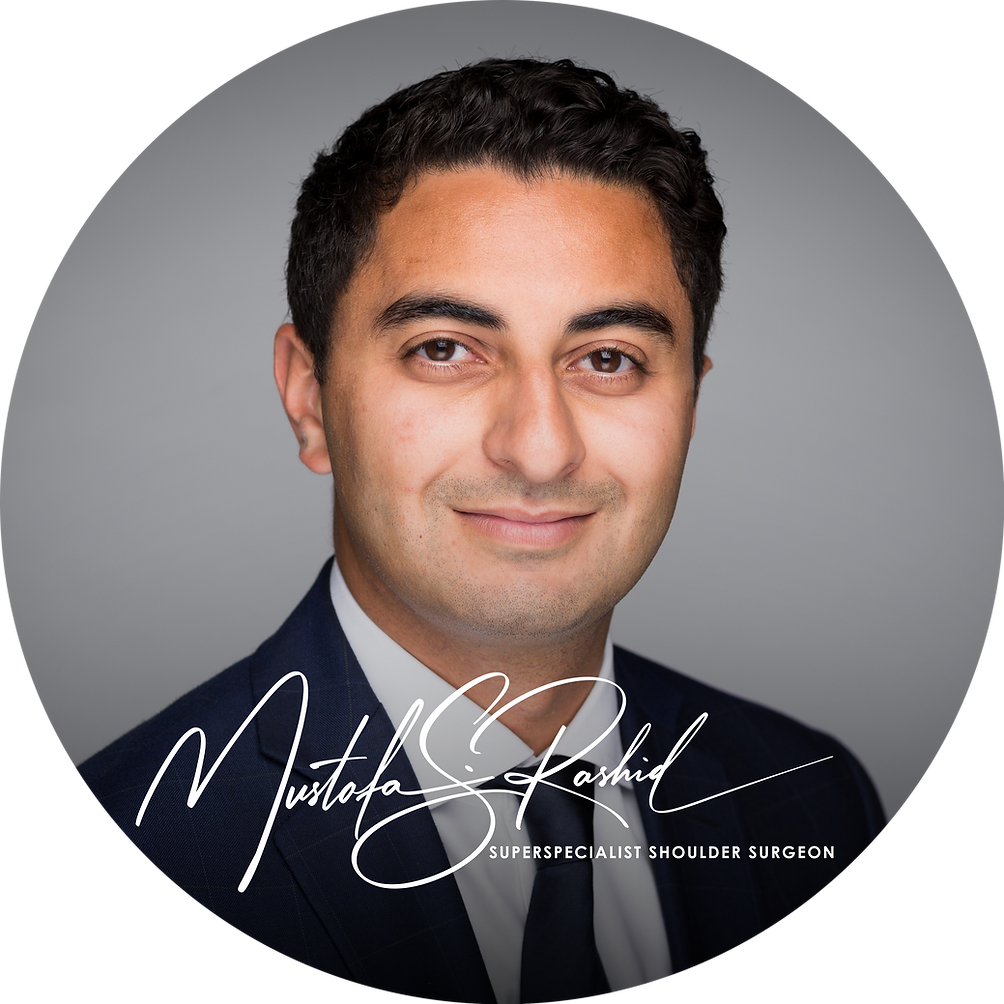Rotator Cuff Tears

Anatomy and Function
The rotator cuff is a collection of four muscles that attach to the ball of the shoulder joint (the humeral head). The largest muscle is at the front, the subscapularis. There is one on top, the supraspinatus, which is the most commonly injured. The two at the back of the shoulder are the infraspinatus and teres minor. Together they form a cuff of tendon tissue.
Their function collectively is to help keep the ball centred in the centre of the socket, the glenoid. Some of the muscles pay a key role in certain movements of the shoulder. With the elbow by the side, the subscapularis acts to rotate the arm inwards, whilst the infraspinatus externally rotates the arm. With the arm out to the side, the teres minor is an important external rotator of the arm.
Causes and Risk Factors
Most people with rotator cuff tendon tears do not have a preceding traumatic event. Occasionally, minor trauma may lead to symptoms. Rarely, a significant traumatic event may cause a tear. Most people with rotator cuff tears do not have any symptoms. Small tears are common as we get older. 1 in 4 65 year olds will have damage to their rotator cuff tendons. When tears enlarge beyond 2cm, they are more likely to be painful and cause weakness. Age is the biggest risk factor for rotator cuff tears. Other risk factors include repetitive overhead activities and trauma. Certain medical conditions have been implicated in some studies, however others have not shown an association.
Symptoms
Most people do not have any symptoms for their rotator cuff tear. Those that develop symptoms, typically describe pain that is felt on the side of the arm, near the top of the arm. Larger tears may also present with weakness, particularly in activities that require holding a weight away from the body. Overhead activities often cause pain. Sleep disturbance and night pain are common features.
Diagnosis
A specialist can often diagnose a rotator cuff tear by asking you questions and examining your shoulder. X-rays are helpful for ruling out other causes of pain, such as arthritis. An ultrasound scan or a MRI scan
Non-Surgical Treatment Options
Physiotherapy to strengthen the attached rotator cuff can help offload the injured area and return the shoulder to near normal function. Steroid injections around the tendon are not preferred as they only provide temporary pain relief at the expense of further weakening the tendon. For patients with larger tears that do not wish to consider surgery, a nerve blocking injection can help provide pain relief for 3-6 months.
Surgical Treatment Options
Rotator cuff repair surgery comes in a variety of types. All rotator cuff repairs use the latest keyhole techniques. Tears at risk of not healing after repair may be augmented with patches that aid healing.
Self-Management and Lifestyle Tips
Managing your pain is key and will allow physiotherapy to strengthen your shoulder. Avoiding overhead and heavy lifting activities until the inflammation has settled may further help manage your pain.
About the Author

Mustafa Rashid
Dr. Mustafa Rashid is an award-winning, well published superspecialised surgeon from the UK, specialising in shoulders
